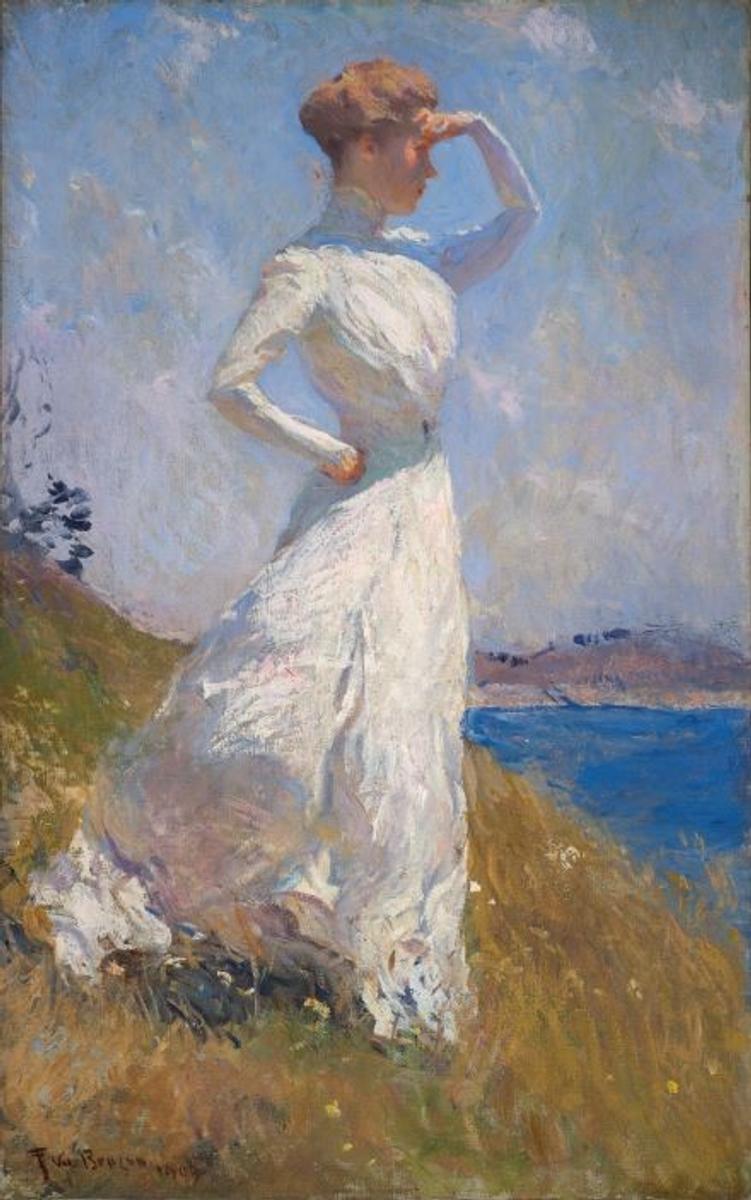April 16, 2022 to July 31, 2022

The Virginia Museum of Fine Arts (VMFA) will host the highly anticipated exhibition Whistler to Cassatt: American Painters in France from April 16, 2022 to July 31, 2022. The exhibition, which made its debut at the Denver Art Museum, focuses on a group of aspiring artists who, between the late 19th and early 20th centuries, left the United States to train abroad then returned home to become some of the greatest influencers to shape American art.
“Whistler to Cassatt: American Painters in France provides a vivid account of late 19th-century France and the cutting-edge opportunities offered to expatriate artists at that time,'' said Alex Nyerges, VMFA’s Director and CEO. “Visitors to the exhibition will see exquisite paintings by some of this country’s foremost artists, created during one of the most complex and transformative periods in American art history.”

This exhibition is organized by the Denver Museum of Art and curated for VMFA by Dr. Susan J. Rawles, Elizabeth Locke Associate Curator of American Decorative Arts. Whistler to Cassatt will include more than 100 works by celebrated American artists including James Abbott McNeill Whistler and Mary Cassatt, who traveled to France between 1855 and 1913 as part of the first wave of expatriate artists to cross the Atlantic Ocean to Europe. The exhibition also features paintings by renowned artists Cecilia Beaux, Frank Weston Benson, William Merritt Chase, William J. Glackens, Childe Hassam, Robert Henri, Winslow Homer, Maurice Prendergast, Theodore Robinson, John Singer Sargent, Henry Ossawa Tanner and John Henry Twachtman.
“The period between the mid-19th and early 20th centuries brought a kaleidoscope of social, economic and political change that expanded and complicated ideas about democracy, thrusting America into a state of flux and challenging its quest for a national identity. It also gave rise to a question that has plagued historians since the birth of the United States: who and what constitutes the American in American art?” said Dr. Rawles.
With its eminent academy, L’École des Beaux-Arts, 19th-century France became the arts mecca of the western world, offering American artists unparalleled opportunities to train and exhibit their works. From the urban studios of Paris to the rural art colonies of Normandy and Brittany, they traveled in communion with their contemporaries, exchanging ideas, exploring new techniques, and adopting new styles and subject matter.
Upon entering a dramatic gallery reminiscent of the historic “Salon,” the most important exhibition of juried works held annually in Paris, visitors to the exhibition Whistler to Cassatt: American Painters in France will relive the experience of late 19th-century art-lovers. Though the academy’s preference for classically styled depictions of historical and biblical subjects was championed by many, contemporary painters were not bound by its doctrine. Seeking artistic independence, many American artists began experimenting with technical and thematic conventions. The exhibition highlights that innovative spirit by featuring works in myriad styles including Naturalism, Realism, Tonalism and Impressionism. It also highlights their accompanying aesthetic philosophies. James Abbott McNeill Whistler, for example, was driven by a creed of “art for art’s sake” that freed paintings from a moral purpose. His experiments in “tonalism” emphasized the sensory relationship between painting and music.

“The exhibition demonstrates the radicalism of the period. The different art movements percolating in France at the time were responding not only to an academic conservatism but also to the reformative political, social and economic ideas circulating among progressive thinkers,” said Dr. Rawles. “While not all of the technical and ideological components were assimilated by American artists, selective elements of those movements and philosophies united to inform the direction of American painting. We have become so accustomed to styles like Impressionism that we forget how wickedly radical it was, or that a handful of American expatriate painters became the country’s first modernists.”

Radical, too, were the American women artists who traveled to France determined to become professional painters. Light is shed on the experiences of women artists — Cecilia Beaux, Mary Cassatt and Elizabeth Nourse — featured in Whistler to Cassatt. Although women artists were not permitted entrance to the École des Beaux-Arts until 1897, they could train at private studios and academies like the Académie Julian. In general, these paying academies adopted the same practices as the École and, though separated by gender, allowed women to study from the life figure, participate in weekly competitions and experiment with a variety of techniques. While Elizabeth Gardner pursued a successful career as an academic painter, becoming the first American woman artist to receive a medal at the Salon, Mary Cassatt explored more avant-garde practices, becoming the only American artist invited to exhibit with the Impressionists. In addition to this studio experience, copy work at the Louvre rounded out an artist’s education. It also provided an opportunity to socialize, as women were excluded from café society.
Ultimately, most American expatriate artists returned to the United States where their work faced mixed reception. Sensitivity about national identity nurtured resistance to French influences, and paintings were often discredited as “un-American.” In response, many returning artists emphasized figurative and landscape subjects that celebrated the rising middle class and its burgeoning leisure activities. Heralding this new direction, “The Ten American Painters” turned away from the conservative National Academy of Design and Society of American Artists to pursue their shared preference for Impressionism. “The Eight” and their successors, the “Independents,” followed more progressive impulses, fueling the drive towards modernism.
“In an era fraught with challenges,” said Dr. Rawles, “Frank Benson’s painting, Sunlight, seems like an uplifting metaphor for America. A young woman stands high on the horizon under the bright light of a clear day. Peering out across an ocean separating the old world from the new, she braces against adverse winds, yet stands strong. Despite all the tension and discomfort that has accompanied America’s growing pains — both physical and philosophical — her youth and spirit signal optimism.”